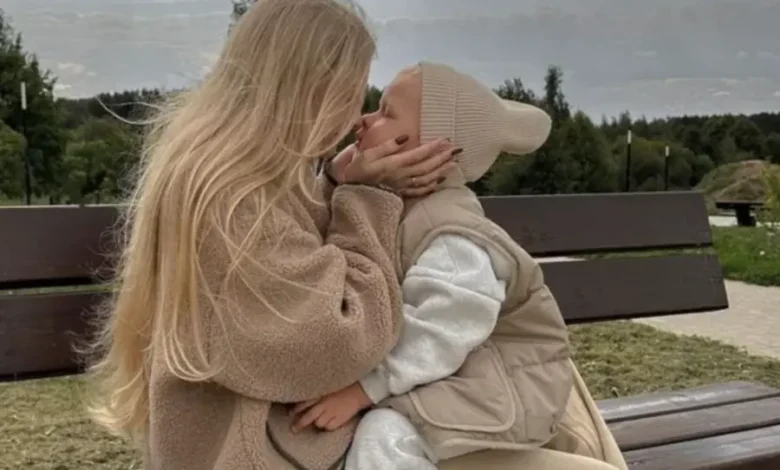“Beige Moms”: How Minimalism Affects Child Development

The world around us is changing at breakneck speed, and along with it, trends in fashion, lifestyle, and raising children are changing. One of the popular phenomena of recent years has become the movement of the so-called “beige moms” – women who choose minimalism in everything: from the interior to children’s clothes and toys. For some, it is a conscious choice that allows them to focus on what is important, reduce consumption and support environmental sustainability. For others, it’s simply following trends that make their social media visually appealing. However, behind aesthetics and minimalism, there are often non-obvious consequences for the child, which can affect his psychological and emotional development.
What is “beige maternity” and why it became popular
“Beige moms” is a term that comes from a special parenting style based on minimalism, natural materials and a neutral color palette. Such mothers prefer clothes in pastel colors, ecological toys, a minimum of bright colors in the house and children’s room.
The popularity of this trend is largely determined by social networks, where perfect photos in light tones create the impression of coziness, peace and aesthetic harmony. The minimalist style also has practical benefits: less stuff means less chaos, easier home care, and less spending on unnecessary purchases.
However, there is another side to this trend – children’s development, which does not always comply with the strict rules of minimalism.
How minimalism affects a child’s development
Childhood is a time of discoveries, emotions, research and experiments. Color, a variety of textures, sounds – all this contributes to the development of the brain, sensory sensations and creative thinking.
- Lack of color stimulation can affect cognitive development
Bright colors play an important role in the development of the baby. Studies prove that various shades contribute to better assimilation of information, development of attention and cognitive processes. A minimalist environment with a limited color spectrum does not give the child enough incentives for active development. - A limited number of toys can reduce the level of imagination
Supporters of minimalism claim that a child has enough toys for creative play. However, psychologists note that the variety of objects contributes to the development of imagination and the ability to find new ways of using things. If a child has only one wooden car or one neutral-looking doll, their play will be less varied than if a child has a collection of toys with different functions. - Minimalism can limit a child’s emotional spectrum
Children express their emotions through play, drawings, and active actions. If everything around looks restrained, there is no opportunity to interact with different textures and colors, the child may feel an emotional vacuum. - Socialization may become more difficult
Children who grow up in an overly sterile and minimalist environment may face difficulties in socialization. In the real world, they will meet with bright colors, different styles and chaotic life. Too perfect an environment can create discomfort for them when adapting to kindergarten, school or playground.
Why adults like minimalism, but children do not
Minimalism appeals to adults as they seek to organize their lives, reduce stress and avoid chaos. An adult can consciously choose calm colors, a limited number of things, a minimum of stimuli.
A child, on the contrary, needs variety. Her world should be bright, filled with sensory research, activity, discoveries. Even if an adult sees colorful toys as a mess, for a child it is a way to learn and develop.
How to find a balance between minimalism and the needs of the child
- Variety of colors in learning and playing
It is not necessary to make the entire interior of the nursery bright, but it is important that the child has colorful toys, books, and objects for creativity. - Functional minimalism
Instead of strictly limiting the number of things, you can choose items that combine several functions. For example, toys that develop motor skills, logic and sensory perception at the same time. - The right to disorder
It is important for a child to be able to create his own creative mess. Draw on large sheets of paper, build huts from blankets, place toys in different corners of the room. This is an important stage of development. - Attention to the needs of the child, not trends
Before choosing a trend-based parenting style, you should observe your child. If she likes to draw, let her have paints of all colors. If she likes soft toys, let her have a favorite plush friend, even if it is bright and does not fit into the perfect “beige” palette.
Trends in education are a natural part of social development. They can be useful if they are adapted to the real needs of the child. However, when the fashion for minimalism becomes more important than the development of the baby, it can turn into a problem.
The child’s world should be bright, full of positive emotions, an opportunity to learn new things, which is especially important during the war. Therefore, it is worth looking for a balance between orderliness, which is appreciated by adults, and natural curiosity, which is necessary for children for harmonious development. After all, childhood is not only a beautiful picture, but also a vivid process of learning about the world.





